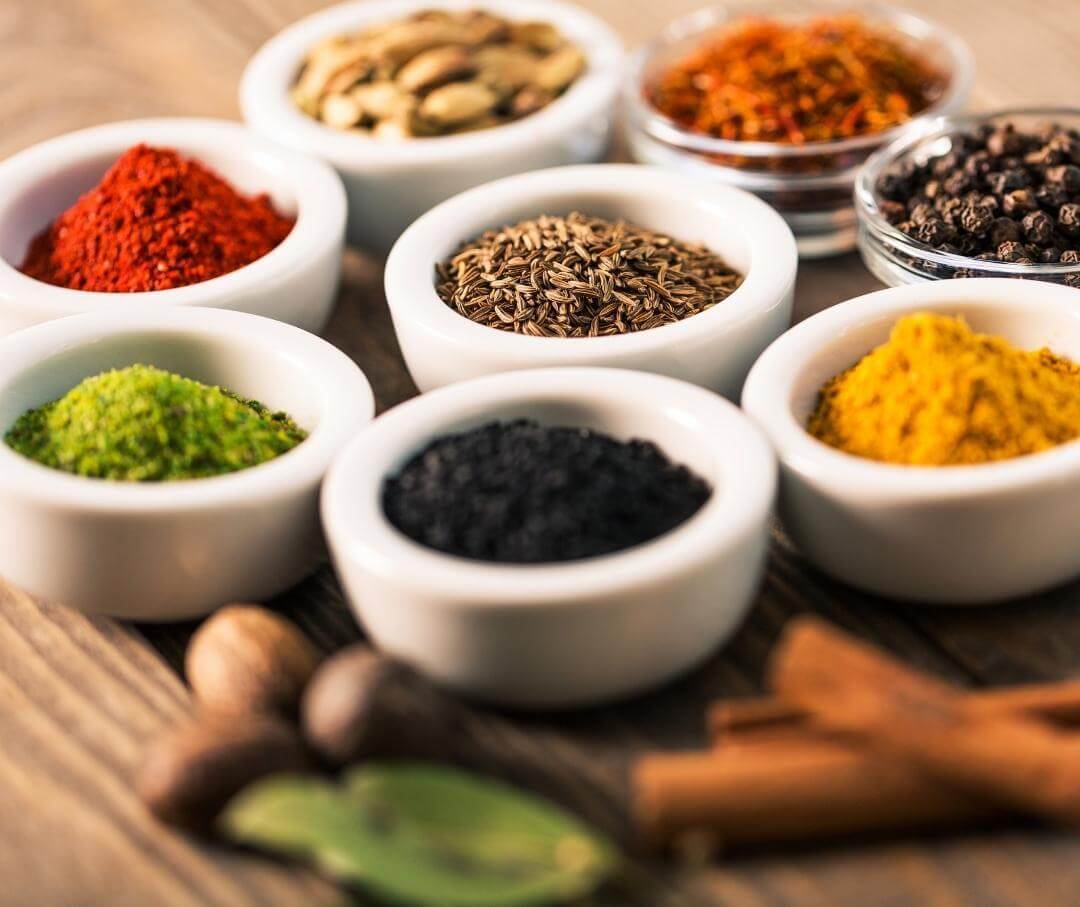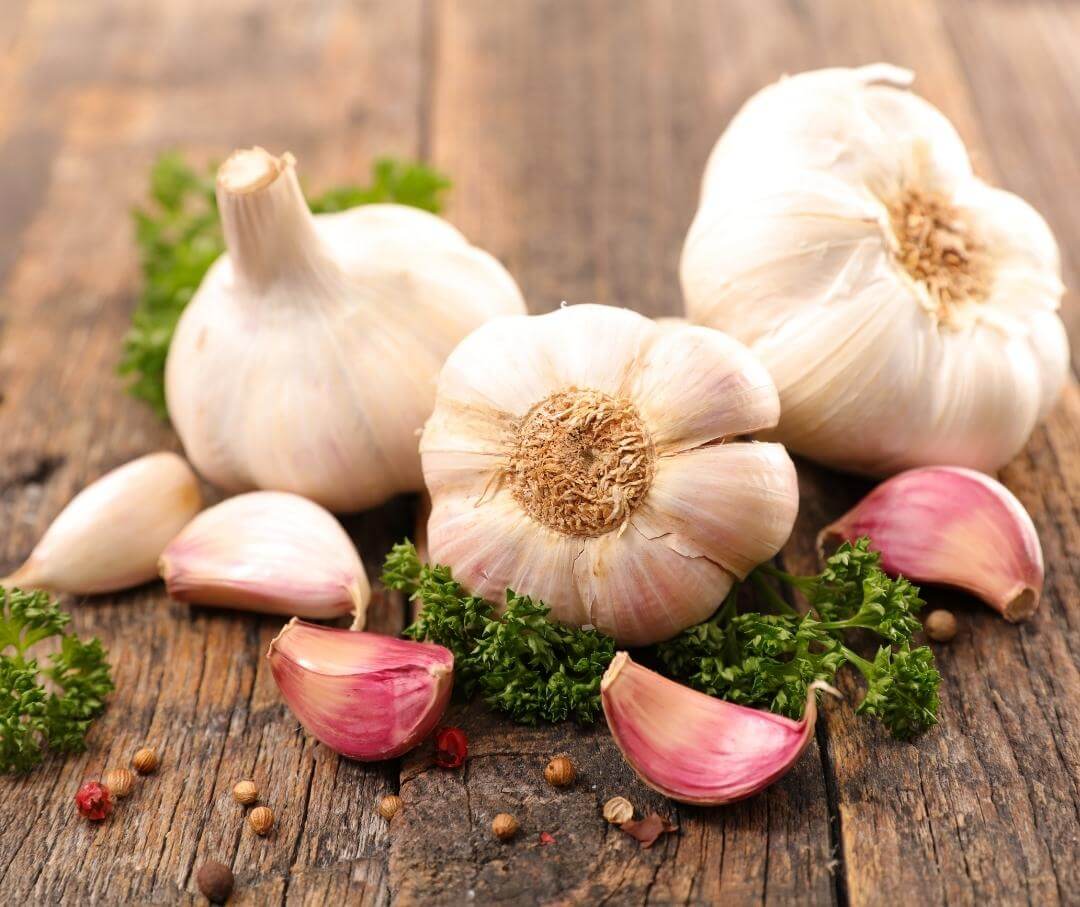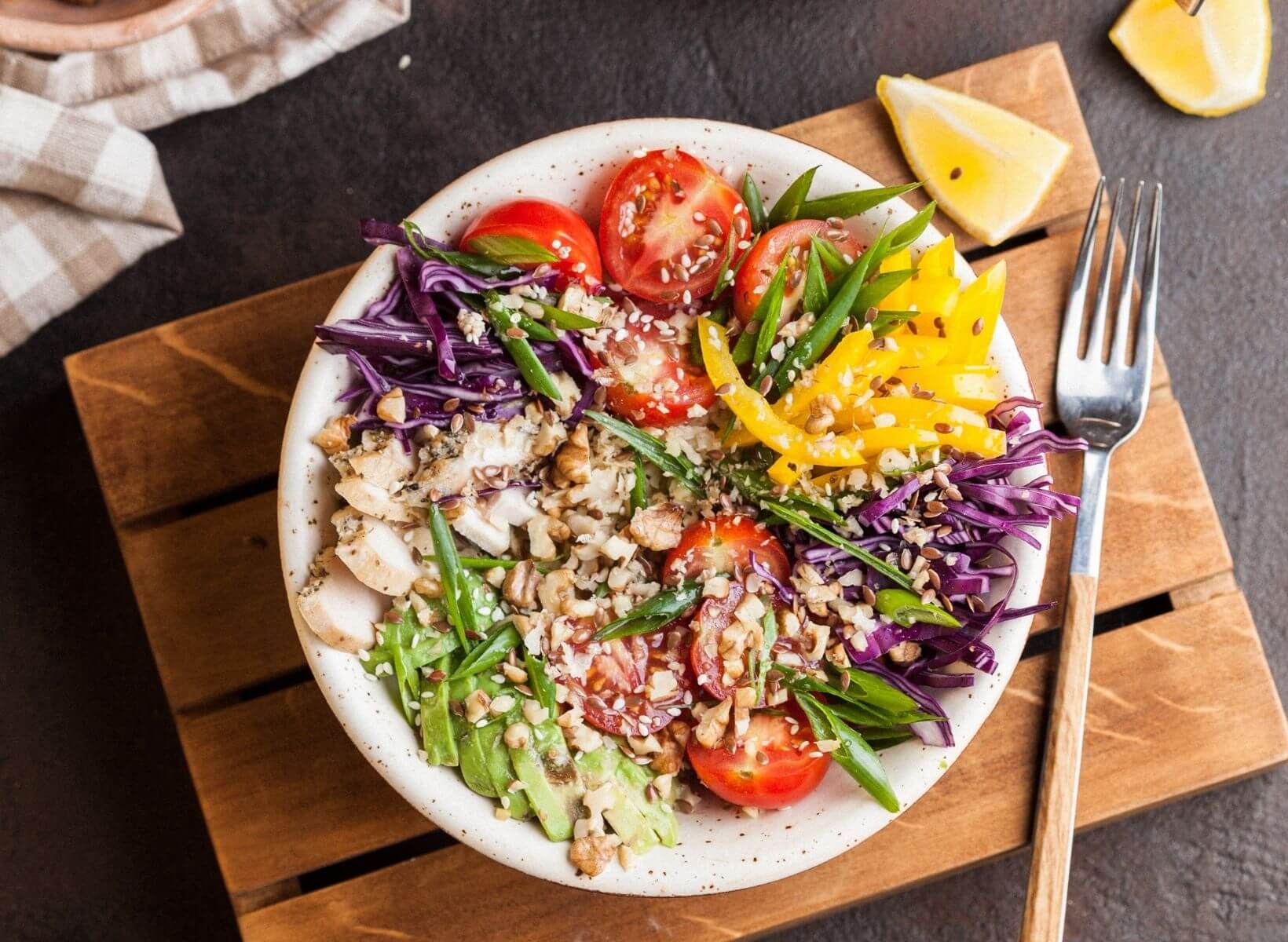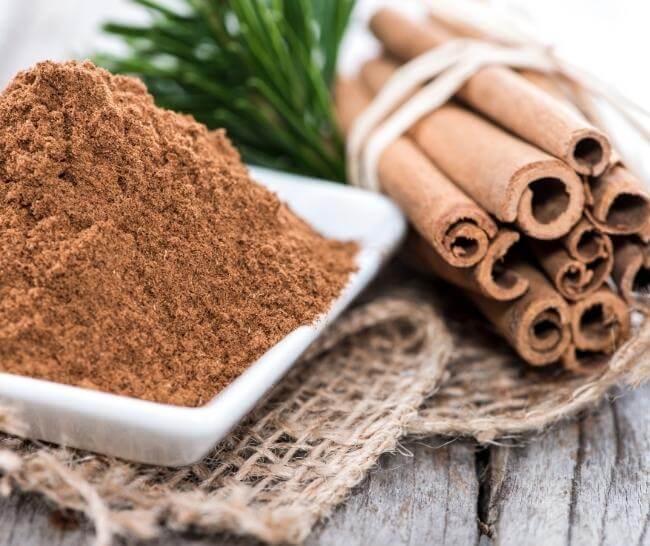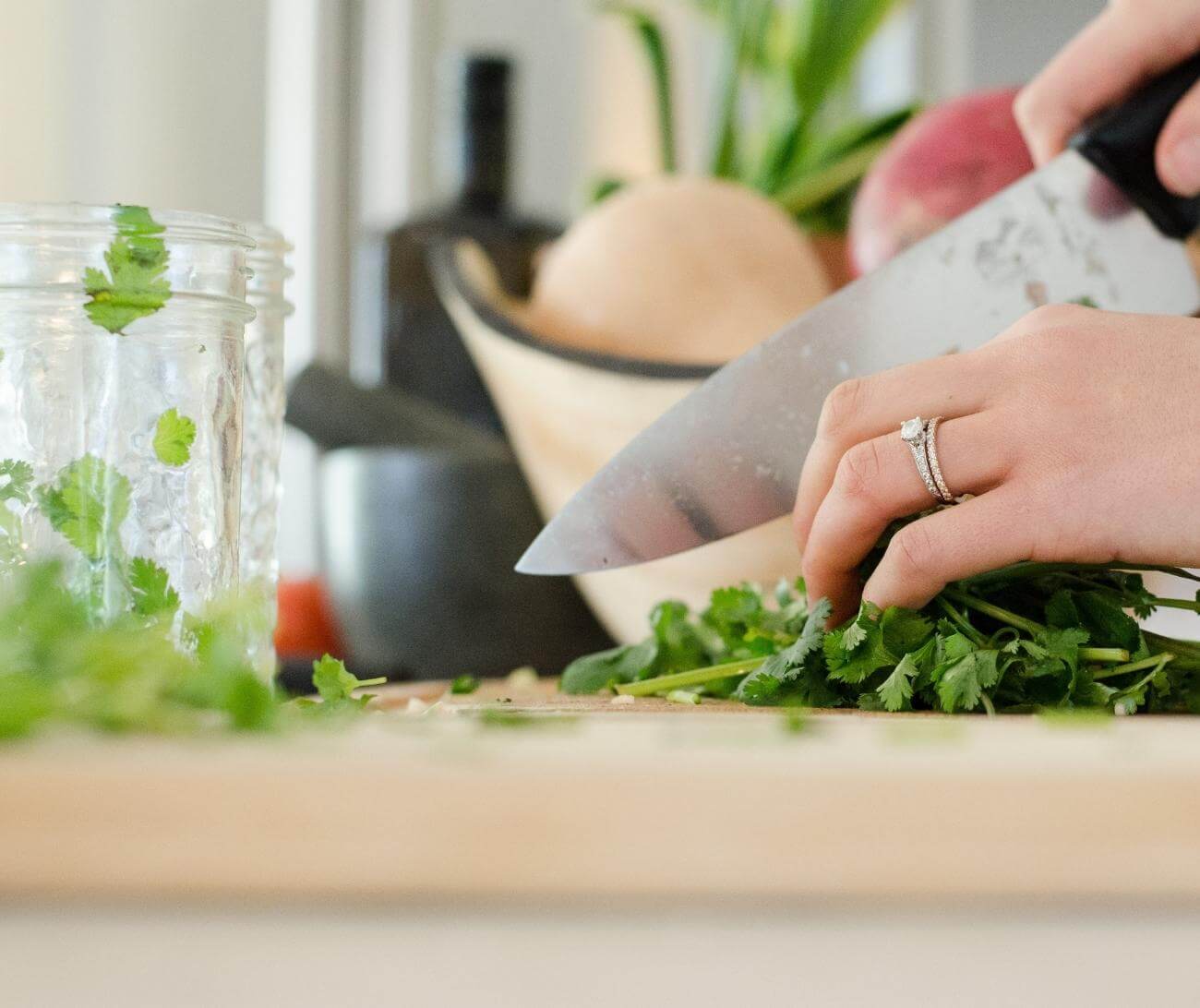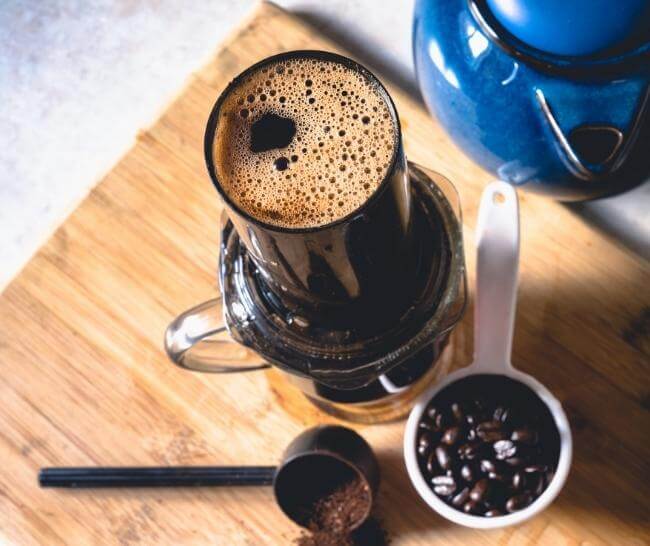When managing your blood sugar level, you may zero in on your carbohydrate intake and try to make more glucose-friendly choices. While this is an excellent first step and an important part of diabetes care, other parts of your diet may benefit from a closer look.
If you have never experimented with herbs and spices in your cuisine before, now is a great time to start. Certain herbs and spices have been linked to lowering blood glucose, and as an added bonus, they can add flavor to food without adding extra salt.
{{mid-cta}}
8 Best Herbs and Spices to Lower Blood Sugar

These herbs and spices can be used daily to support healthy blood sugar levels.
Fenugreek
Fenugreek leaves look similar to celery greens. The fenugreek plant has potent seeds that can be purchased whole and ground prior to ingestion. Fenugreek seeds are high in soluble fiber, which delays the digestion and absorption of carbs into the bloodstream to help lower blood sugar levels.
A study from India discovered that participants who ate 10 grams of fenugreek soaked in water every day for six months reported improved hbA1c values (a three-month average of blood glucose levels to assess for type 2 diabetes) compared to participants who did not eat fenugreek daily.1
You can include fenugreek seeds in your diet by soaking them in water overnight before eating them. They will absorb water, and the rich soluble fiber can aid with satiety, blood glucose control, and potentially lower LDL cholesterol levels.2 All parts of the plant can be consumed raw or added to cooked foods.
Cinnamon
Cinnamon is one of the most popular aromatic spices used worldwide. Cinnamon extract has been linked to lower insulin levels, glucose levels, and cholesterol.3 It’s sold as oral tablets and ingested like a multivitamin.
A meta-analysis confirmed that intake of cinnamon powder or cinnamon extract over at least two months lowered fasting blood glucose readings.4
You can include more cinnamon in your diet by:
- Sprinkling it onto your breakfast oatmeal or low-GI toast
- Adding ¼ tsp to your morning coffee to enhance the flavor
- Dusting low GI fresh fruit with cinnamon and briefly baking them to add a wow factor to the dessert
Green Tea
Green tea has always been a key player in the natural health food arena. You may be surprised to learn that green tea leaves are grown from Camellia sinensis, an ancient herb recognized throughout Chinese medicine.
The dominant health-promoting agents within green tea are antioxidants, specifically catechins. Catechins have been shown to reduce the risk of several types of cancers, possess anti-inflammatory properties to combat oxidative stress and support cognitive function.5, 6
Green tea is also rich in polyphenols, another form of antioxidant-rich compounds. Studies have shown polyphenols can reduce fasting sugar levels, decrease A1c scores, and enhance insulin sensitivity to reduce insulin resistance.7
Consistency is critical when using green tea to improve blood sugar. Drink green tea daily without adding milk or sweetening agents to achieve the best results.
Green tea extracts are popular in herbal supplement stores. These potent products may cause more harm than good for some people. A small number of users (<100 people) reported acute liver disease after 1-6 months of using green tea extracts, and it’s believed that the number of these incidents is underreported.8
These green tea formulas and extracts are not FDA-regulated, so caution should be taken when considering them. To be safe, choose regular green tea brewed at home, and always choose supplements from a reputable brand with third-party testing.
Turmeric
Ground turmeric is the most popular turmeric product on the market. Turmeric has a distinct golden-yellow hue and is mild in taste. It is potent in antioxidants and health-promoting vitamins. Like green tea, turmeric has been used in traditional health practices for thousands of years.
The active health compound in turmeric is curcumin, which acts as an antioxidant in the body. Researchers have linked the intake of curcumin with improved glucose metabolism, suppression of inflammation, and facilitation of insulin signaling.9
Other notable blood-glucose-lowering mechanisms linked with turmeric include:10
- Reducing glucose production in the liver
- Encouraging the body to uptake more glucose out of the bloodstream and into muscle tissue
- Promoting insulin secretion from the pancreas
- Reducing insulin resistance
Turmeric powder is often used in Indian food preparation and can be added to morning eggs, soups, stir-fry dishes, or this chicken sheet pan recipe. Curcumin supplements are also available and are well-researched. Still, once again, you should look for a brand with a good reputation and third-party testing to ensure efficacy and safety (and always check with your doctor first).
Bitter Melon
Bitter melon, sometimes called bitter gourd, resembles a hybrid between a bumpy gourd and a bright green cucumber. Native to India, the seeds and core of the fruit are edible, but the rind is very bitter and is usually discarded.
A study with 90 participants demonstrated a modest improvement in fasting blood sugar in those who ate bitter melon for 12 weeks compared to the placebo group.11 More peer-reviewed studies are required to further validate these findings, but they are compelling.
You can include bitter melon in your diet by:
- Cooking bitter melon pulp in a stir fry or stew
- Pan-frying bitter melon with garlic and onion
- Including thin slices of bitter melon into your lunchtime salad
- Making stuffed bitter melon by mixing bitter melon pulp with ground meat and spices
Gymnema Sylvestre (Gurmar)
Oral consumption of Gymnema Sylvestre before eating something sweet can block your sweet taste receptors and decrease the appeal of sweet treats. The natural gymnemic acid in gurmar suppresses sweetness, which can reduce the palatability of sugary foods.12
A systemic review of Gurmar suggests that this herb may also prevent the absorption of sugar in the small intestine, decreasing its impact on blood sugar.13 More testing is needed to fully understand how this herb impacts weight management, sugar absorption, and taste buds.
You can consume gurmar in various forms:
- Powdered, added to water, and taken before a meal
- Capsules up to 3-4 times daily following the manufacturer's recommendations
- Steeped as tea for 10-15 minutes before drinking
Ginger
Ginger (Zingiber officinale) is a spice that adds zest and flavor to foods and beverages. Like many other herbs and spices, ginger has been used for thousands of years in traditional medicine to help with pain management, gastrointestinal disorders, and immune system support.
Ginger is also known for its impact on free radicals, which influence diabetes risk and adverse health outcomes from high blood sugar, such as inflammation and heart disease. Several studies suggest ginger may help by lowering blood sugar and blood lipids while positively influencing the inflammatory response.14
Ginger is incredibly versatile. It can be added to dishes, consumed as a tea or powder, or even taken in supplement form under the direction of a healthcare provider.
Ginseng
There are several types of ginseng, including American ginseng, Southern ginseng, and Korean red ginseng. This herb is usually taken as an extract in supplement form and has been used traditionally in tonics and teas for thousands of years to support wellness and vitality and nourish blood pressure and adrenal health.
Ginseng could help support blood sugar for people with diabetes by regulating insulin secretion while reducing oxidative stress and inflammation.15 However, more research is needed to assess whether ginseng can also support people without blood sugar dysregulation or those with prediabetes.
<p class="pro-tip"><strong>Learn More: </strong><a href=control-blood-sugar-spikes-after-meals>How to Control Blood Sugar Spikes After Meals</a>.</p>
How Long Does It Take for Spices to Lower Blood Sugar?
Based on the studies referenced in this article, two months appears to be the earliest point at which you can expect to experience better blood glucose control. That is a real commitment, and you need to prepare yourself to sustain your new habits for the long haul.
Is It Safe to Take Herbs for Lowering Blood Sugar?
Some herbs may interfere with prescribed medications. Consult with your healthcare provider before adding any herbal supplements or extracts to your self-care regime.
Are There Fast-Acting Spices to Lower Blood Sugar ASAP?
There is no scientific evidence that any spices lower blood sugar fast. However, preliminary studies have indicated that vinegar may help lower blood sugar.
To decrease the chance of spiking your blood glucose, plan your meals and snacks around low glycemic index foods. Low-GI foods are high in fiber, which delays digestion and absorption of glucose and are naturally low in sugar.
Spices That Lower Blood Sugar: What to Consider
Be mindful of your drink choices when trying to reduce your blood sugar. Bottled green tea drinks may seem healthy, but unfortunately, they often contain sweeteners, which can interfere with blood glucose control.
Some golden milk or turmeric milk recipes call for maple syrup and honey. Although these sweetening agents are natural, they can still cause a spike in blood glucose. A simple fix is to omit those natural sugars and add some high-fat dairy to slow down the absorption of the lactose sugars.
How to Include Herbs and Spices in Your Diet

If you need some inspiration, here are a few more ideas to help you include more herbs and spices in your diet:
- Breakfast with low GI toast and fresh berries sprinkled with cinnamon
- Lunch salad with vegetables, chickpeas, and turmeric powder added to your oil-based dressing
- Dinner with salmon, olive oil, fenugreek powder, salad and a low-GI starch (squash)
Remember that consistency is key for health benefits; your body will need time to adapt to dietary changes. Although blood sugar levels can change every day, the long-term data trend will be the most helpful indicator of whether an herb or spice is having an effect.
Using a CGM to Find Spices That Lower Your Blood Sugar
The value of a continuous glucose monitor (CGM) is the opportunity to tap into fully personalized health data. Continuous blood sugar monitoring gives you a complete picture of how your food and lifestyle choices directly impact your blood glucose.
If you want to see how a spice or herb can potentially improve your blood glucose, try to be as scientific in your approach as possible. Only include one herb or spice from this list with your meals. If you mix too many, it will be challenging to know which one is affecting your blood sugar.
Your diet is a major factor in blood glucose control, but so are sleep, stress levels, and physical activity. If you want to learn more tips to help control your blood glucose to support weight loss, explore more articles from the Signos blog below.
<p class="pro-tip"><strong>Also Read: </strong><a href=how-long-lower-blood-sugar-spike>How Long Does it Take to Lower Blood Sugar Spikes? A Guide</a>.</p>
- Item 1
- Item 2
- item 3
Topics discussed in this article:
References
- Anderson, R. A., Zhan, Z., Luo, R., Guo, X., Guo, Q., Zhou, J., Kong, J., Davis, P. A., & Stoecker, B. J. (2016). Cinnamon extract lowers glucose, insulin and cholesterol in people with elevated serum glucose. Journal of Traditional and Complementary Medicine, 6(4), 332–336. https://doi.org/10.1016/j.jtcme.2015.03.005
- Brala, P. M., & Hagen, R. L. (1983). Effects of sweetness perception and caloric value of a preload on short term intake. Physiology & Behavior, 30(1), 1–9. https://doi.org/10.1016/0031-9384(83)90030-6
- Davis, P. A., & Yokoyama, W. (2011). Cinnamon Intake Lowers Fasting Blood Glucose: Meta-Analysis. Journal of Medicinal Food, 14(9), 884–889. https://doi.org/10.1089/jmf.2010.0180
- GHorbani, Z., Hekmatdoost, A., & Mirmiran, P. (2014). Anti-Hyperglycemic and Insulin Sensitizer Effects of Turmeric and Its Principle Constituent Curcumin. International Journal of Endocrinology and Metabolism, 12(4). https://doi.org/10.5812/ijem.18081
- Kim, S. K., Jung, J., Jung, J. H., Yoon, N., Kang, S. S., Roh, G. S., & Hahm, J. R. (2020). Hypoglycemic efficacy and safety of Momordica charantia (bitter melon) in patients with type 2 diabetes mellitus. Complementary Therapies in Medicine, 52, 102524. https://doi.org/10.1016/j.ctim.2020.102524
- Kim, Y., & Clifton, P. (2018). Curcumin, Cardiometabolic Health and Dementia. International Journal of Environmental Research and Public Health, 15(10), 2093. https://doi.org/10.3390/ijerph15102093
- Kochman, J., Jakubczyk, K., Antoniewicz, J., Mruk, H., & Janda, K. (2020). Health Benefits and Chemical Composition of Matcha Green Tea: A Review. Molecules, 26(1), 85. https://doi.org/10.3390/molecules26010085
- Liu, K., Zhou, R., Wang, B., Chen, K., Shi, L. Y., Zhu, J. D., & Mi, M. T. (2013). Effect of green tea on glucose control and insulin sensitivity: a meta-analysis of 17 randomized controlled trials. The American Journal of Clinical Nutrition, 98(2), 340–348. https://doi.org/10.3945/ajcn.112.052746
- Musial, C., Kuban-Jankowska, A., & Gorska-Ponikowska, M. (2020). Beneficial Properties of Green Tea Catechins. International Journal of Molecular Sciences, 21(5), 1744. https://doi.org/10.3390/ijms21051744
- National Institute of Diabetes and Digestive and Kidney Diseases. Liver Disease Research Branch, National Institutes of Health (U.S.), & National Library of Medicine (U.S.). Specialized Information Services Division. (2012). LiverTox. NIH. https://www.ncbi.nlm.nih.gov/books/NBK547925/ Updated November 2020
- Pothuraju, R., Sharma, R. K., Chagalamarri, J., Jangra, S., & Kumar Kavadi, P. (2013). A systematic review of Gymnema sylvestre in obesity and diabetes management. Journal of the Science of Food and Agriculture, 94(5), 834–840. https://doi.org/10.1002/jsfa.6458
- Ranade, M., & Mudgalkar, N. (2017). A simple dietary addition of fenugreek seed leads to the reduction in blood glucose levels: A parallel group, randomized single-blind trial. AYU (An International Quarterly Journal of Research in Ayurveda), 38(1), 24. https://doi.org/10.4103/ayu.ayu_209_15
- Sharma, R. D., Raghuram, T. C., & Rao, N. S. (1990). Effect of fenugreek seeds on blood glucose and serum lipids in type I diabetes. European journal of clinical nutrition, 44(4), 301–306. https://pubmed.ncbi.nlm.nih.gov/2194788/

